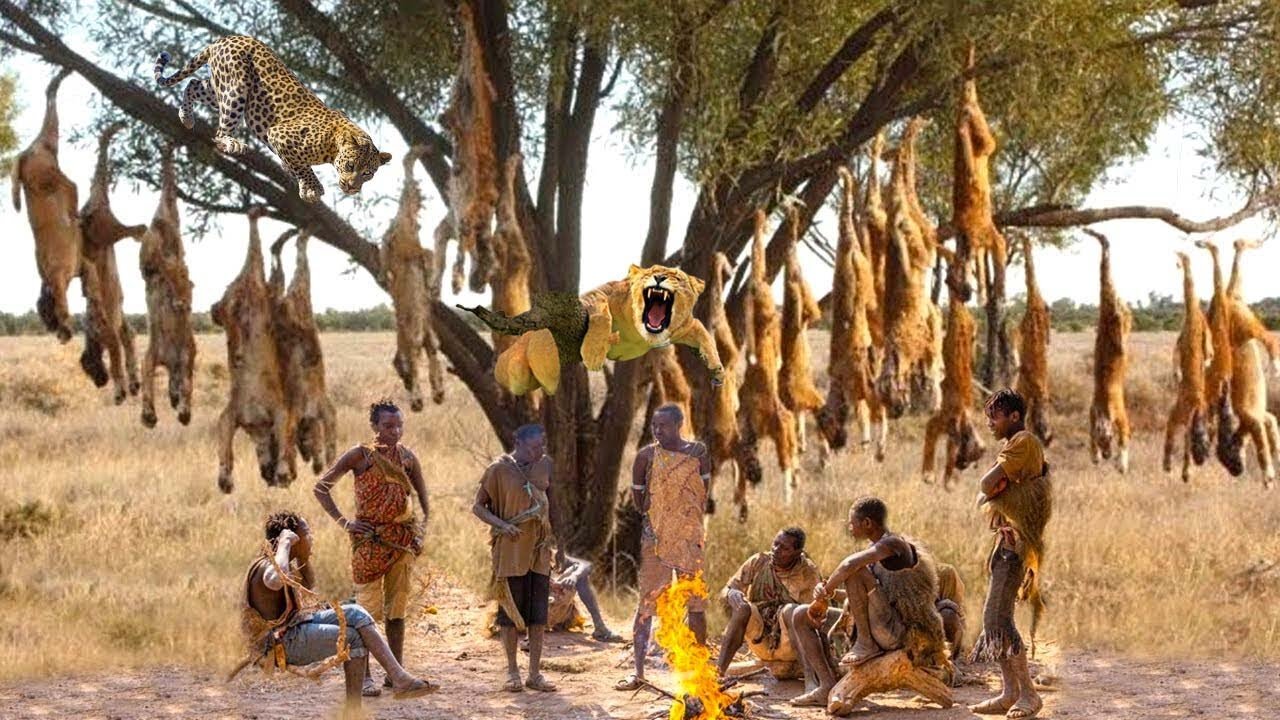Premium Only Content

Masai mara Tribal Fight With Cheetahs for Cheetahs Prey
The Maasai are a Nilotic ethnic group inhabiting northern, central and southern Kenya and northern Tanzania. They are among the best-known local populations internationally due to their residence near the many game parks of the African Great Lakes and their distinctive customs and dress.The Maasai speak the Maa language a member of the Nilotic language family that is related to the Dinka, Kalenjin and Nuer languages. Except for some elders living in rural areas, most Maasai people speak the official languages of Kenya and Tanzania, Swahili and English. The Maasai population has been reported as numbering 1,189,522 in Kenya in the 2019 census, compared to 377,089 in the 1989 census, though many Maasai view the census as government meddling and therefore either refuse to participate or actively provide false information.Many Maasai tribes throughout Tanzania and Kenya welcome visitors to their villages to experience their culture, traditions, and lifestyle, in return for a fee
The Maasai inhabit the African Great Lakes region and arrived via South Sudan. Most Nilotic speakers in the area, including the Maasai, the Turkana and the Kalenjin, are pastoralists and are famous for their fearsome reputations as warriors and cattle rustlers. The Maasai and other groups in East Africa have adopted customs and practices from neighbouring Cushitic-speaking groups, including the age-set system of social organisation, circumcision, and vocabulary terms
The Maasai territory reached its largest size in the mid-19th century and covered almost all of the Great Rift Valley and adjacent lands from Mount Marsabit in the north to Dodoma in the south. At this time the Maasai, as well as the larger Nilotic group they were part of, raised cattle as far east as the Tanga coast in Tanganyika (now mainland Tanzania). Raiders used spears and shields but were most feared for throwing clubs (orinka) which could be accurately thrown from up to 70 paces (approx. 100 metres). In 1852, there was a report of a concentration of 800 Maasai warriors on the move in what is now Kenya. In 1857, after having depopulated the "Wakuafi wilderness" in what is now southeastern Kenya, Maasai warriors threatened Mombasa on the Kenyan coast
-
 17:51
17:51
Stephen Gardner
8 hours ago🔥YES!! Trump CUTS CORD on Democrats SECRET PROGRAM!
73.2K55 -
 2:16:49
2:16:49
TheSaltyCracker
8 hours agoMusk Destroys Gov't Money Pot ReeEEeE Stream 02-05-25
142K242 -
 1:10:59
1:10:59
FreshandFit
7 hours agoTop 3 Ways To Overcome A Break Up
86.3K7 -
 6:32:11
6:32:11
Akademiks
9 hours agoDrake Finally CUTS off FAKE FRIENDS in the Industry. VIOLATES KHALED, LEBRON! Announces album Feb14
75.5K11 -
 27:28
27:28
Glenn Greenwald
12 hours agoGlenn Reacts to Trump's Gaza Take Over: System Update Special
181K354 -
 2:13:49
2:13:49
Melonie Mac
8 hours agoGo Boom Live Ep 36!
97.1K9 -
 1:02:11
1:02:11
Sarah Westall
9 hours agoFreezing USAID & its Operations in Ukraine: A Massive Money Laundering Organization? w/ Sam Anthony
87.4K17 -
 2:05:35
2:05:35
Space Ice
12 hours agoSpace Ice & Redeye: Neil Breen's Pass Thru
37K1 -
 1:00:23
1:00:23
The StoneZONE with Roger Stone
8 hours agoRoger Stone Talks Trump’s Electric First 100 Day Agenda | The StoneZone w/ Roger Stone
41.7K8 -
 DVR
DVR
Redacted News
12 hours agoBREAKING! EPSTEIN LIST INCOMING UNDER AG PAM BONDI? DEMOCRATS FREAKING OUT, PRINCE ANDREW NERVOUS
191K291